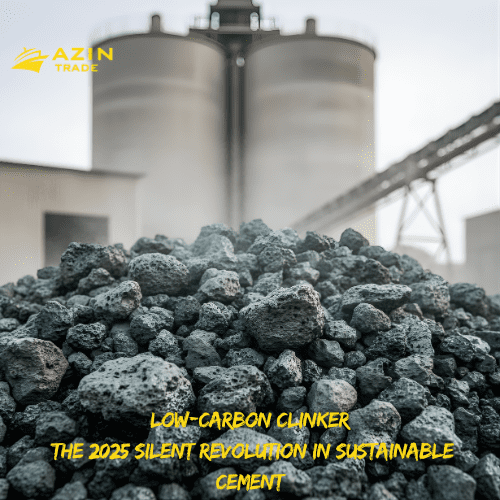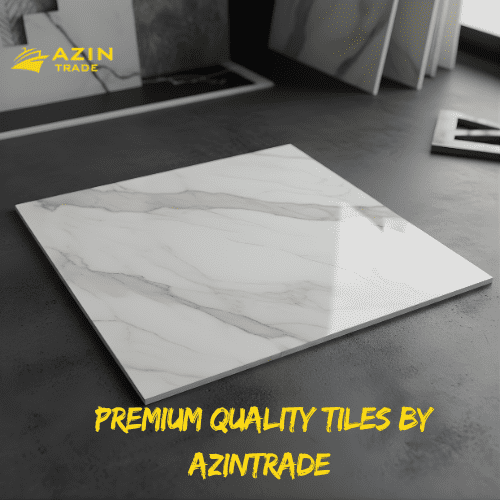Gypsum Stone: A Comprehensive Guide to Its Properties, Uses, and Market Insights
Introduction to Gypsum Stone
Gypsum stone, a naturally occurring mineral, has been a cornerstone in construction, agriculture, and art for thousands of years. Known for its versatility, affordability, and eco-friendly properties, gypsum stone continues to be a critical material in modern industries. As of 2025, the global push for sustainable and cost-effective building solutions has amplified its demand, making it a vital resource for architects, builders, farmers, and designers. This comprehensive guide explores the properties, types, applications, market trends, environmental impact, and future innovations of gypsum stone, offering valuable insights for professionals and enthusiasts alike.
What is Gypsum Stone?
Gypsum stone is a soft sulfate mineral composed of calcium sulfate dihydrate (CaSO₄·2H₂O). Formed through the evaporation of ancient seawater, it is found in sedimentary rock formations worldwide, including significant deposits in countries like Iran, China, and the United States. Its unique chemical composition allows it to transform into various forms, such as gypsum powder or plaster of Paris, making it indispensable in multiple industries.
Key Characteristics of Gypsum Stone
- Color: Typically white, gray, or transparent, though impurities may introduce hues like yellow or pink.
- Hardness: Rated 2 on the Mohs scale, making it one of the softest minerals, ideal for carving and molding.
- Density: Low density facilitates easy handling and transportation.
- Forms: Available as raw blocks, fine powder, plaster of Paris, and prefabricated gypsum boards.
The ability of gypsum stone to react with water and form a moldable paste is a key reason for its widespread use in construction and decorative applications.
Historical Significance of Gypsum Stone
Gypsum stone has a rich history that spans civilizations:
- Ancient Egypt: Over 4,000 years ago, Egyptians used gypsum plaster to coat the interiors of the Great Pyramids, showcasing its durability.
- Roman Empire: Romans employed gypsum in decorative walls, ceilings, and architectural embellishments.
- Medieval Europe: Intricate gypsum plasterwork adorned cathedrals and castles, highlighting its aesthetic versatility.
- Modern Era: The invention of drywall in the 20th century revolutionized construction, making gypsum stone a staple in residential and commercial buildings.
This historical journey underscores the enduring appeal of gypsum stone as a functional and decorative material across cultures and eras.
Types of Gypsum Stone
Gypsum stone exists in several forms, each tailored to specific applications:
1. Natural Gypsum Stone
Extracted directly from quarries, natural gypsum is prized for its purity and consistency. It serves as a raw material for construction, agriculture, and industrial processes.
2. Synthetic Gypsum
A by-product of industrial processes like flue-gas desulfurization in power plants, synthetic gypsum is an eco-friendly alternative used primarily in drywall manufacturing.
3. Gypsum Powder
Produced by grinding and heating gypsum stone, this fine powder is a key ingredient in plaster, cement additives, and soil conditioners.
4. Gypsum Boards (Drywall)
Prefabricated panels made from gypsum plaster sandwiched between paper layers, gypsum boards are widely used for walls, ceilings, and partitions due to their ease of installation and versatility.
5. Selenite and Alabaster
Selenite, a transparent crystalline form, and alabaster, a fine-grained variety, are used in decorative arts, jewelry, and sculptures due to their aesthetic appeal.
Properties of Gypsum Stone
gypsum raw’s unique properties make it a preferred material across industries:
Physical Properties
- Lightweight: Easy to handle, reducing labor costs in construction.
- Fire-Resistant: Contains water molecules that release steam when heated, slowing fire spread.
- Sound Insulation: Absorbs sound, making it ideal for quiet interiors.
- Moisture Regulation: Naturally regulates humidity, preventing mold growth.
Chemical Properties
- Non-Toxic: Safe for indoor use and environmentally friendly.
- Water Reactivity: Combines with water to form a pliable paste, enabling molding and casting.
- Compatibility: Enhances the strength and workability of cement and other materials.
Aesthetic Properties
- Smooth Texture: Provides a polished finish for decorative applications.
- Neutral Color Palette: Blends seamlessly with modern and traditional interior designs.
Extraction and Processing of Gypsum Stone
The extraction and processing ofgypsum raw involve several stages:
- Mining: Gypsum is typically extracted from open-pit or underground mines, depending on deposit depth.
- Crushing: Large gypsum rocks are crushed into smaller pieces for easier handling.
- Calcination: The crushed stone is heated to remove water content, producing gypsum powder or plaster of Paris.
- Milling: The calcined gypsum is ground into a fine powder for various applications.
- Manufacturing: Gypsum powder is used to create boards, plasters, or other products.
This streamlined process ensures that gypsum stone is readily available in forms suited for diverse industries.
Applications of Gypsum Stone
Gypsum stone’s versatility allows it to serve multiple sectors:
1. Construction
Gypsum is a cornerstone of modern construction:
- Gypsum Boards: Used for walls, ceilings, and partitions in residential and commercial buildings.
- Plaster: Provides smooth finishes for interior walls and ceilings.
- Cement Additive: Enhances cement’s strength and workability, reducing cracking.
2. Interior Design
Gypsum stone is a favorite among interior designers for:
- False Ceilings: Lightweight panels with integrated lighting create modern, aesthetic ceilings.
- Decorative Moldings: Cornices, arches, and wall panels add elegance to interiors.
- Wall Finishes: Smooth gypsum plaster creates luxurious, seamless surfaces.
3. Agriculture
In agriculture, gypsum powder improves soil health:
- Soil Structure: Breaks up heavy clay soils, improving aeration and drainage.
- Nutrient Supply: Provides calcium and sulfur, essential for plant growth.
- pH Balance: Reduces soil salinity, enhancing crop productivity.
4. Medical Applications
Gypsum is used to create:
- Orthopedic Casts: Lightweight and moldable casts for immobilizing broken bones.
- Dental Molds: Precise molds for dental restorations and prosthetics.
5. Art and Craft
Gypsum’s softness and workability make it ideal for:
- Sculptures: Alabaster and selenite are carved into intricate artworks.
- Decorative Elements: Used in ornamental designs for buildings and homes.
6. Industrial Uses
Gypsum powder serves as a filler or additive in:
- Paper and Textiles: Enhances texture and strength.
- Paints and Coatings: Improves consistency and durability.
- Chemical Manufacturing: Used in producing sulfuric acid and other compounds.
Gypsum Stone vs. Plaster of Paris
While gypsum stone and plaster of Paris are closely related, they differ in key ways:
| Feature | Gypsum Stone | Plaster of Paris |
|---|---|---|
| Origin | Naturally occurring mineral | Processed by heating gypsum stone |
| Strength | Durable for structural applications | Softer, suited for finishing and molding |
| Applications | Construction, agriculture, raw material | Decorative finishes, casts, small repairs |
| Cost | Lower, raw material | Higher due to processing costs |
Key Insight: Gypsum stone is the raw, versatile material, while plaster of Paris is a refined product tailored for specific finishing tasks.
Benefits of Using Gypsum Stone
Gypsum stone offers numerous advantages:
- Cost-Effective: Affordable compared to alternatives like cement or lime.
- Eco-Friendly: Recyclable and non-toxic, supporting sustainable practices.
- Fire Resistance: Enhances safety in buildings by slowing fire spread.
- Sound Insulation: Reduces noise pollution in residential and commercial spaces.
- Moisture Control: Prevents mold and mildew, improving indoor air quality.
- Ease of Installation: Lightweight boards and plasters reduce labor time and costs.
- Versatility: Applicable in construction, agriculture, art, and medical fields.
Gypsum Stone in Modern Construction
In 2025, gypsum boards dominate the construction industry due to their:
- Ease of Installation: Prefabricated panels reduce construction time by up to 30%.
- Cost Savings: Lower material and labor costs compared to traditional methods.
- Durability: Resistant to wear, fire, and environmental factors.
- Customization: Available in fire-resistant, moisture-resistant, and acoustic variants.
Builders increasingly rely on gypsum stone suppliers for bulk deliveries to meet the demands of large-scale projects, such as high-rise apartments and commercial complexes.
Gypsum Stone in Interior Design
Interior designers leverage gypsum stone for:
- False Ceilings: Integrated with LED lighting for modern aesthetics.
- Decorative Panels: Create textured or patterned walls for luxury interiors.
- Cornices and Moldings: Add elegance to hotels, offices, and homes.
The flexibility of gypsum allows designers to experiment with shapes and textures, blending functionality with visual appeal.
Agricultural Applications of Gypsum Stone
Gypsum powder is a game-changer in agriculture:
- Soil Amendment: Improves water infiltration in clay-heavy soils.
- Nutrient Enrichment: Supplies calcium and sulfur, boosting crop yields.
- Salinity Reduction: Lowers soil salinity, benefiting crops in arid regions.
In regions like India and the Middle East, gypsum use in agriculture has increased crop productivity by 15–20%, supporting food security goals.
Medical and Artistic Uses
In medicine, gypsum is critical for:
- Orthopedic Casts: Lightweight and durable casts for bone immobilization.
- Dental Applications: High-precision molds for dental work.
In art, gypsum’s softness enables:
- Sculptures: Alabaster carvings in galleries and museums.
- Decorative Crafts: Ornamental designs for homes and public spaces.
Global Production and Supply Chain
In 2025, the top gypsum-producing countries include:
- China: 140 million tons, leading global production and exports.
- Iran: 20 million tons, known for high-purity deposits.
- India: 17 million tons, driven by domestic construction demand.
- USA: 15 million tons, a hub for drywall manufacturing.
- Turkey: 12 million tons, a key exporter to Europe and the Middle East.
These countries ensure a robust global supply chain, with Iran and Turkey playing significant roles in the Middle Eastern market.
Gypsum Stone Pricing in 2025
Pricing for gypsum stone varies based on form, purity, and region:
- Raw Gypsum Stone: $30–70 per ton, depending on mining costs and purity.
- Gypsum Powder: $100–200 per ton, used in construction and agriculture.
- gypsum raw Boards: $3–10 per sheet, with specialty boards (fire- or moisture-resistant) at $10–20 per sheet.
Factors Influencing Prices
- Purity: Higher-purity gypsum commands premium prices.
- Transportation: Bulky material increases logistics costs.
- Demand Fluctuations: Seasonal construction and agricultural demands affect pricing.
- Supplier Reliability: Reputable suppliers may charge more for consistent quality.
Market Trends Driving Gypsum Stone Demand
Several trends are shaping the gypsum stone market in 2025:
- Sustainable Construction: Gypsum’s recyclability aligns with green building standards.
- Urbanization: Rapid urban growth in Asia-Pacific and the Middle East fuels demand for gypsum boards.
- Modular Construction: Prefabricated gypsum products reduce construction time and costs.
- Agricultural Expansion: Increased gypsum use in soil treatment supports global food security.
Demand Forecast (2025–2030)
| Year | Global Demand (Million Tons) | Growth Rate |
|---|---|---|
| 2025 | 330 | – |
| 2026 | 345 | 4.5% |
| 2027 | 365 | 5.0% |
| 2028 | 385 | 5.5% |
| 2029 | 410 | 6.0% |
| 2030 | 435 | 6.2% |
Gypsum Stone vs. Competing Materials
gypsum raw competes with materials like cement, lime, and fiber-cement boards:
| Material | Strength | Cost | Eco-Friendliness | Applications |
|---|---|---|---|---|
| Gypsum Stone | Medium | Low | High | Boards, ceilings, agriculture |
| Cement | High | Medium | Medium | Structural concrete, flooring |
| Lime | Medium | Medium | Medium | Mortars, plasters |
| Fiber-Cement | High | High | Low | Exterior cladding, roofing |
Insight: gypsum raw excels in non-structural applications, offering unmatched cost-effectiveness and sustainability.
Case Studies: gypsum raw in Action
- Dubai Residential Projects: Gypsum boards reduced construction time by 25% in high-rise apartments, improving efficiency and sound insulation.
- Luxury Hotels in Europe: Decorative gypsum moldings enhanced aesthetic appeal in five-star hotels.
- Agricultural Initiatives in India: Gypsum powder increased crop yields by 20% in Punjab’s farmlands.
- Green Schools in Germany: Synthetic gypsum boards contributed to eco-friendly certifications.
- Commercial Complexes in China: Prefabricated gypsum panels streamlined construction of office buildings.
Innovations and Future Outlook
The gypsum raw industry is evolving with cutting-edge innovations:
- Smart Gypsum Boards: Embedded sensors for temperature and sound control.
- Recycling Programs: Reprocessing waste gypsum to reduce environmental impact.
- Agricultural Advancements: Nano-gypsum formulations for enhanced soil treatment.
- Green Architecture: Gypsum’s low-energy production supports sustainable building certifications.
By 2030, the gypsum market is expected to grow significantly, driven by eco-conscious construction and agricultural expansion.
Environmental Impact and Sustainability
gypsum raw is a leader in sustainable materials:
- Recyclability: Waste gypsum can be reprocessed into new boards or powder.
- Low Carbon Footprint: Requires less energy than cement or lime production.
- Soil Health: Enhances agricultural productivity without chemical pollutants.
- Indoor Air Quality: Regulates humidity, reducing mold and health risks.
Choosing the Right Gypsum Stone Supplier
To ensure quality and reliability:
- Reputation: Check certifications, client reviews, and industry standing.
- Pricing: Compare quotes to balance cost and quality.
- Supply Capacity: Verify the supplier’s ability to meet bulk demands.
- Product Quality: Opt for high-purity gypsum for optimal performance.
- Logistics: Choose suppliers with efficient delivery networks to minimize costs.
Frequently Asked Questions (FAQs)
- What is gypsum stone used for?
Construction (boards, plaster), interior design, agriculture, medical casts, and art. - How does gypsum stone differ from plaster of Paris?
Gypsum stone is the raw mineral; plaster of Paris is a processed, softer derivative. - What is the cost of gypsum stone in 2025?
Raw gypsum: $30–70/ton; gypsum powder: $100–200/ton; gypsum boards: $3–10/sheet. - Is gypsum rawenvironmentally friendly?
Yes, it’s recyclable, non-toxic, and supports sustainable construction and agriculture. - How does gypsum benefit agriculture?
Improves soil structure, provides nutrients, and reduces salinity. - Which countries lead in gypsum production?
China, Iran, India, USA, and Turkey. - Why is gypsum popular in interior design?
Lightweight, moldable, fire-resistant, and aesthetically versatile. - Is gypsum raw safe for indoor use?
Yes, it regulates humidity and prevents mold growth. - What are the benefits of gypsum powder?
Enhances cement, improves soil fertility, and supports medical and artistic applications. - What trends are shaping the gypsum market?
Green construction, modular housing, agricultural growth, and innovative products.
Conclusion
Gypsum stone remains a timeless and versatile material, integral to construction, interior design, agriculture, and beyond. Its affordability, eco-friendliness, and adaptability ensure its relevance in 2025 and the years ahead. As industries embrace sustainable practices and innovative technologies, gypsum raw will continue to play a pivotal role in shaping modern architecture, farming, and design. By understanding its properties, applications, and market dynamics, stakeholders can harness the full potential of this remarkable mineral.






